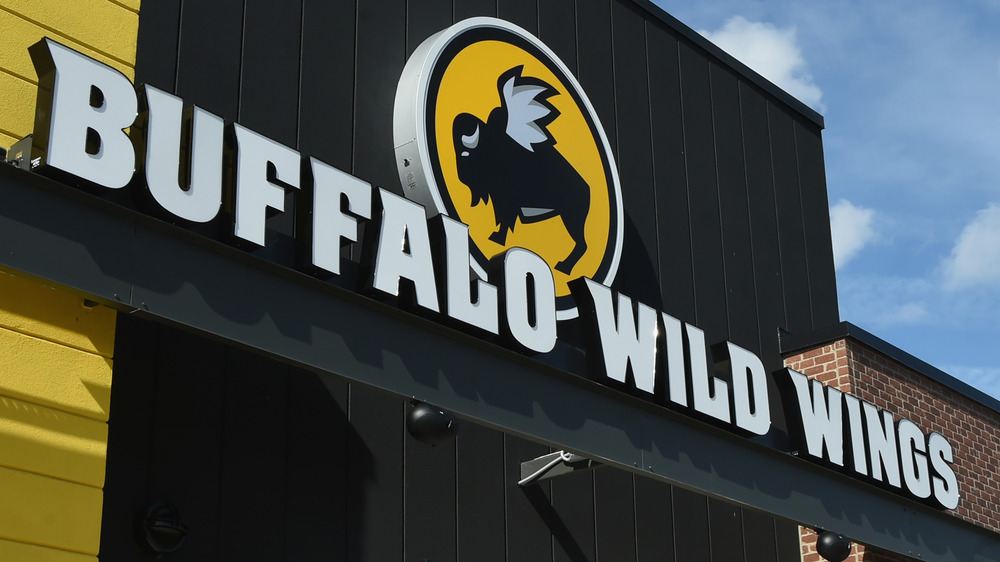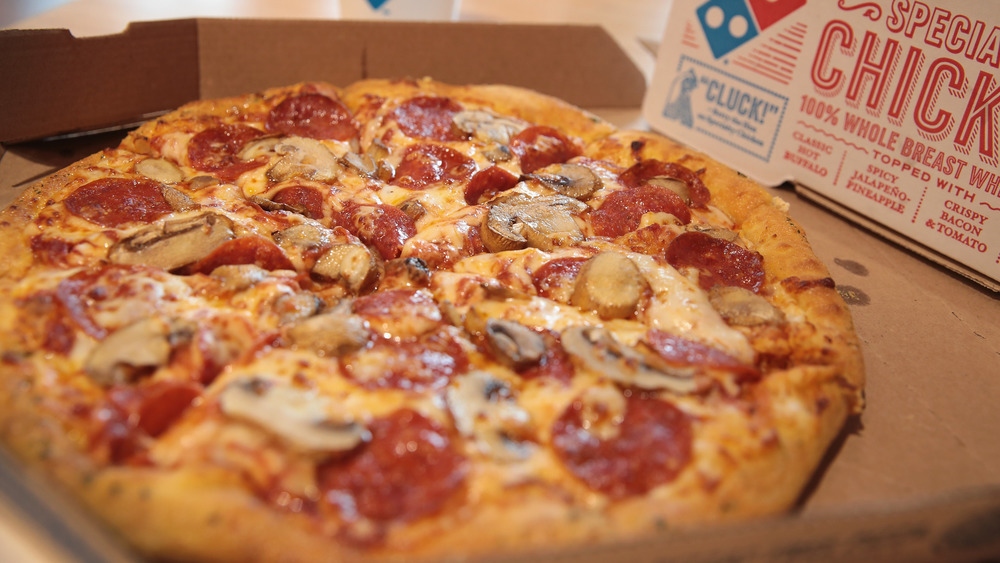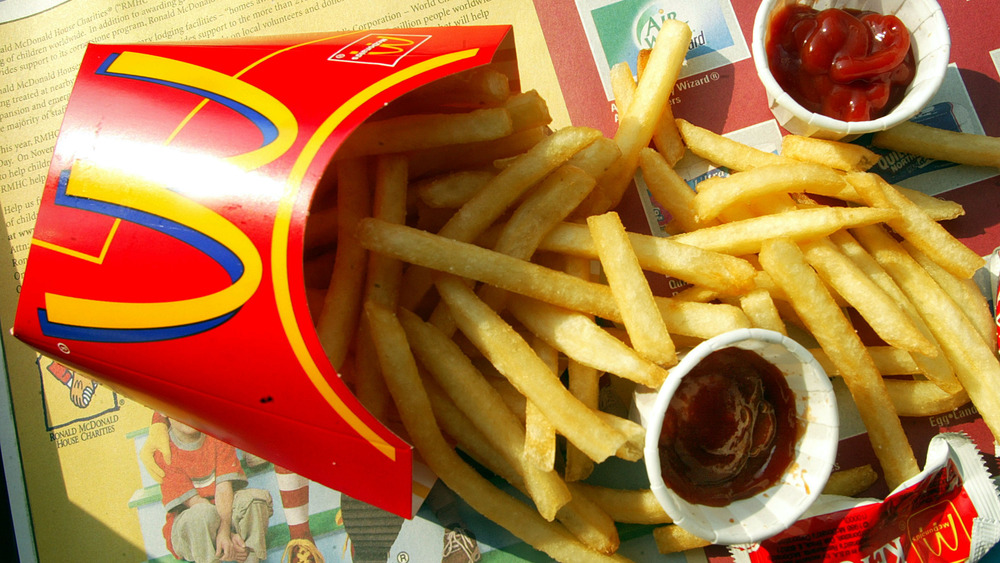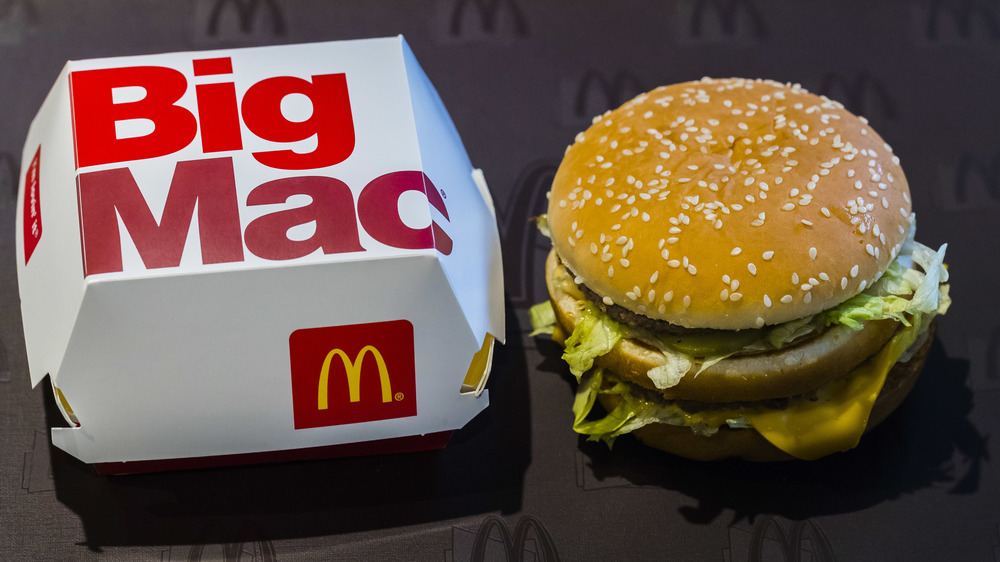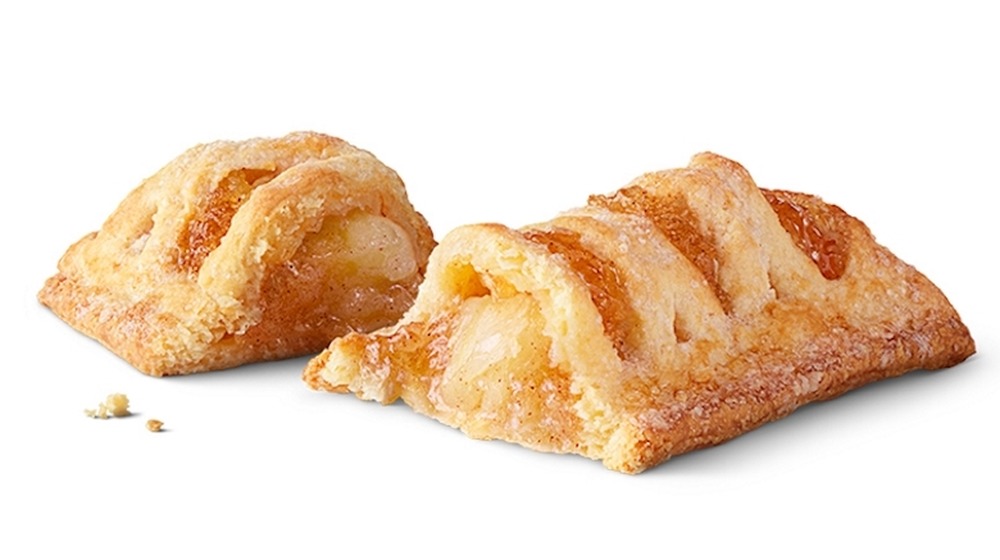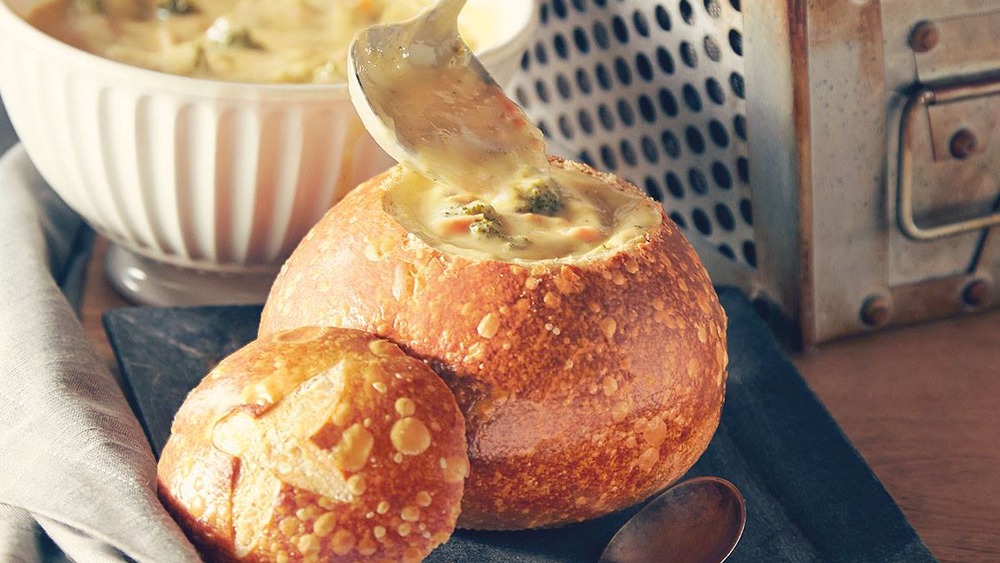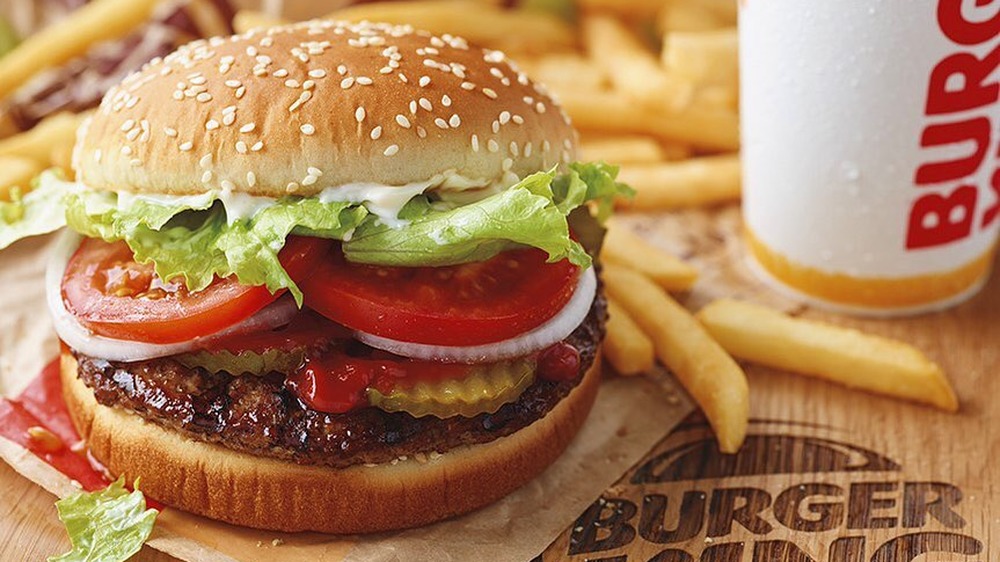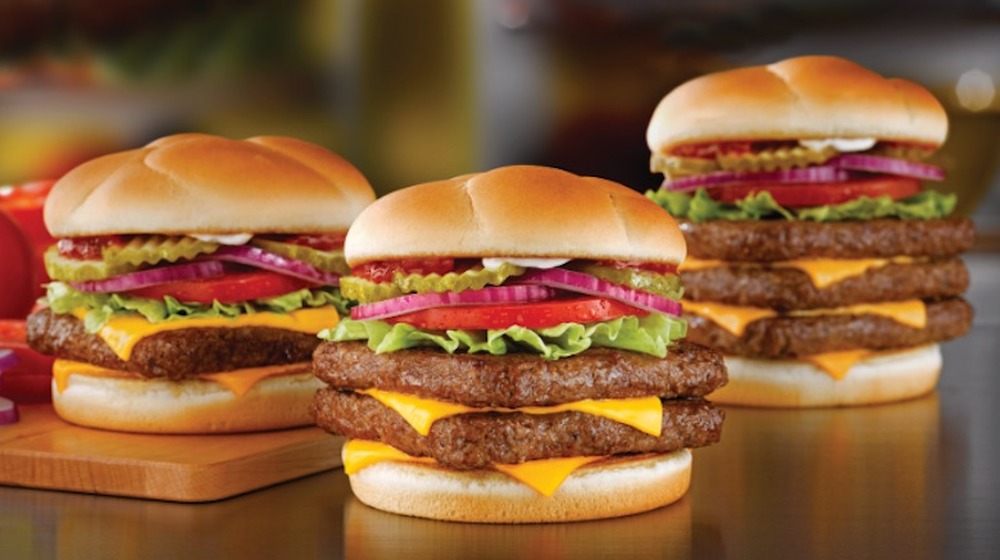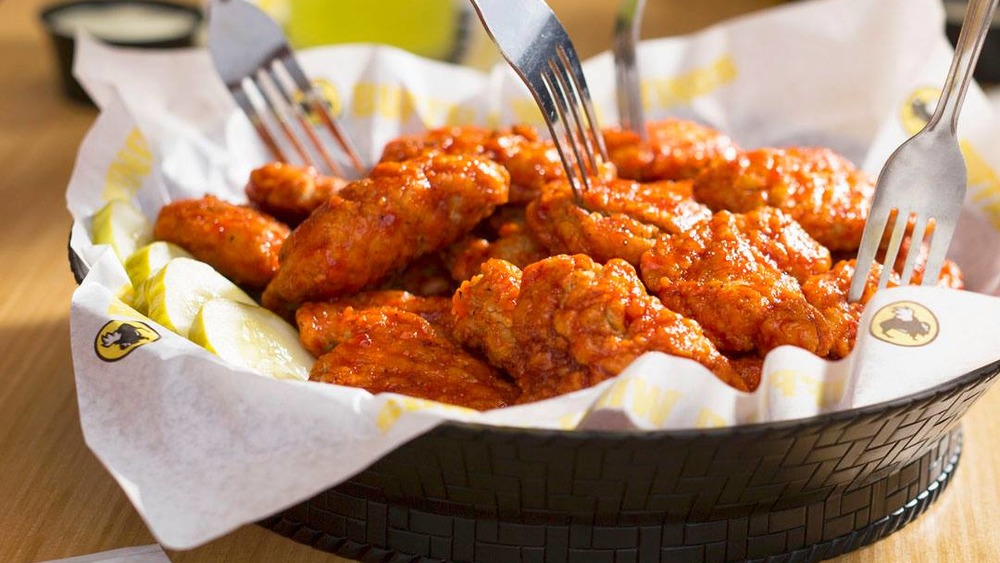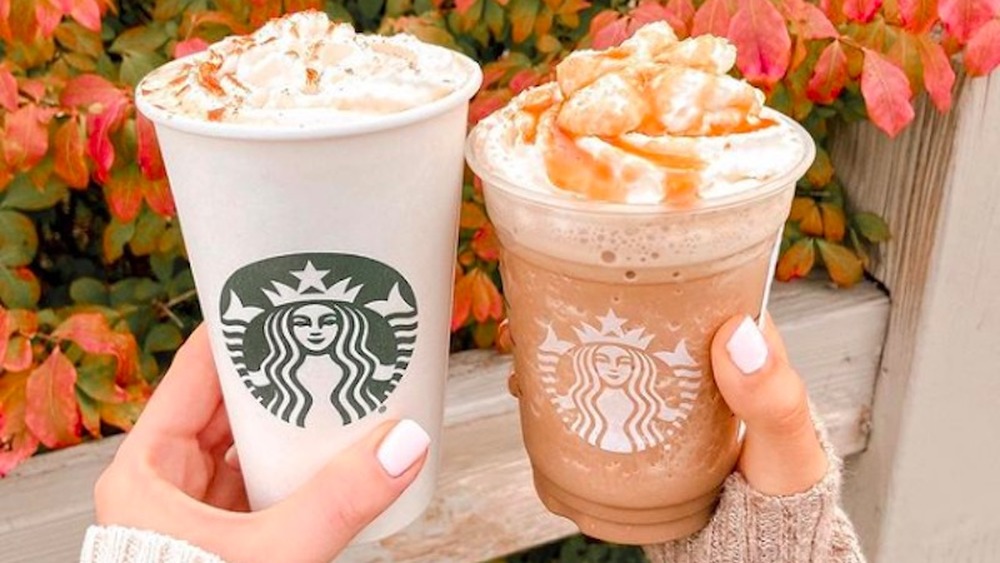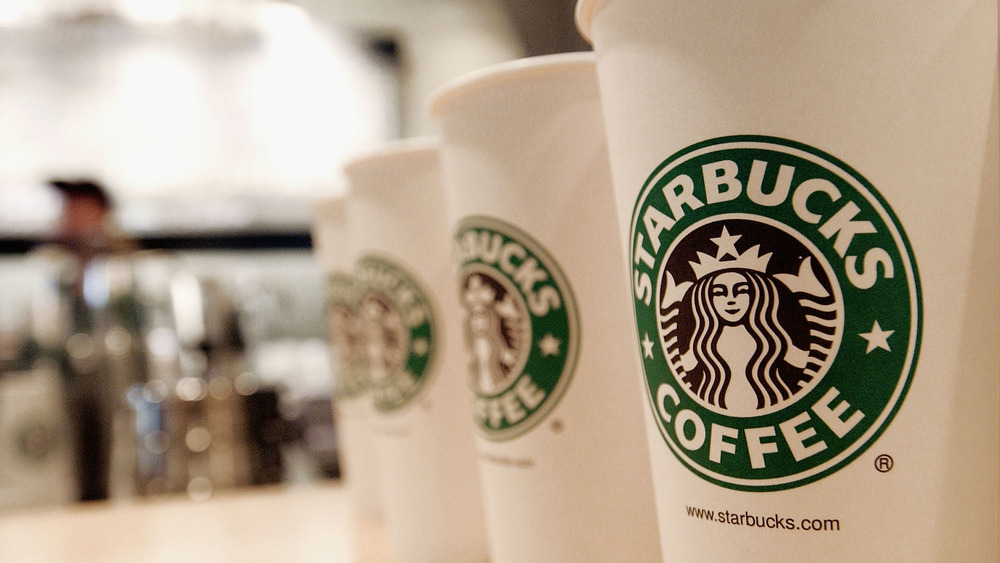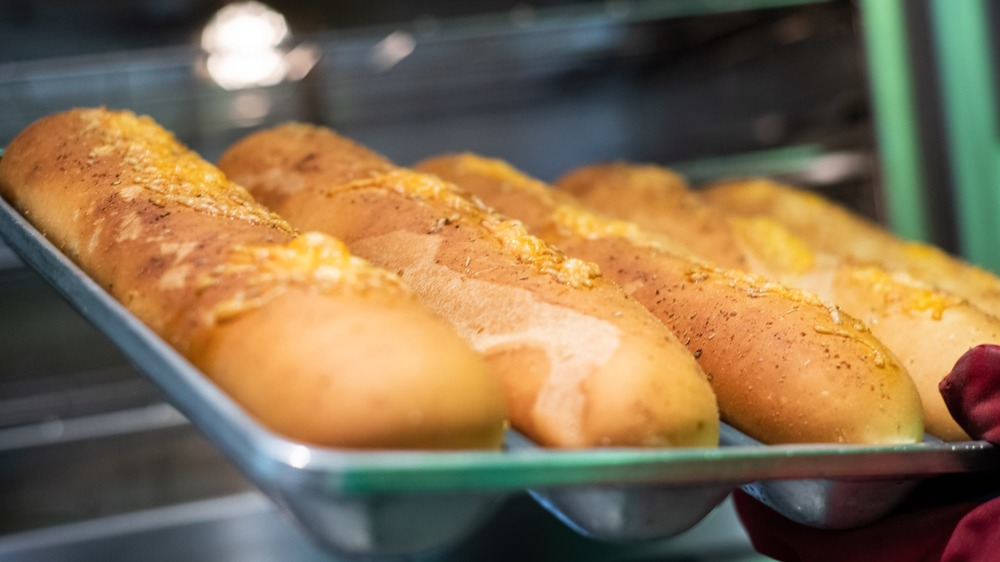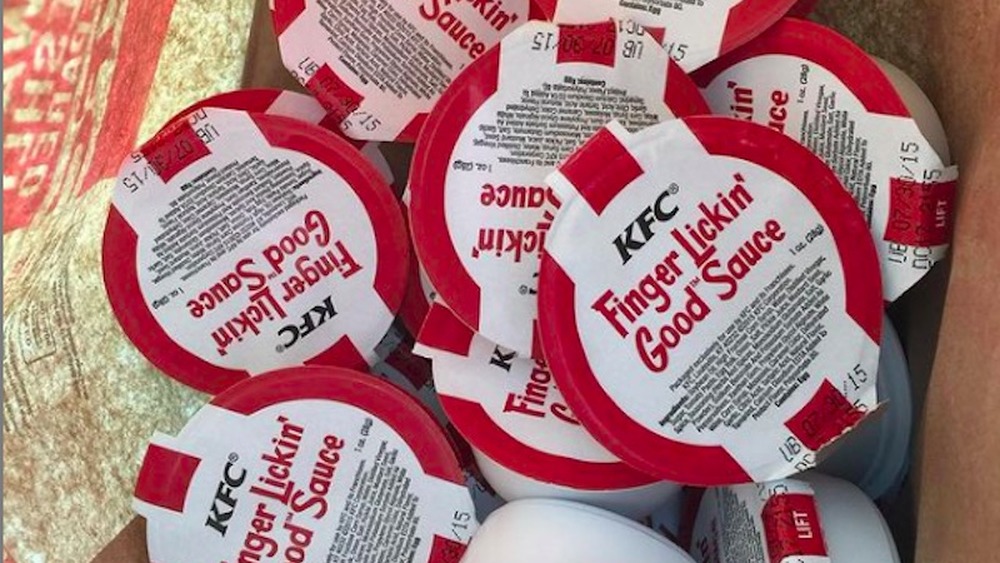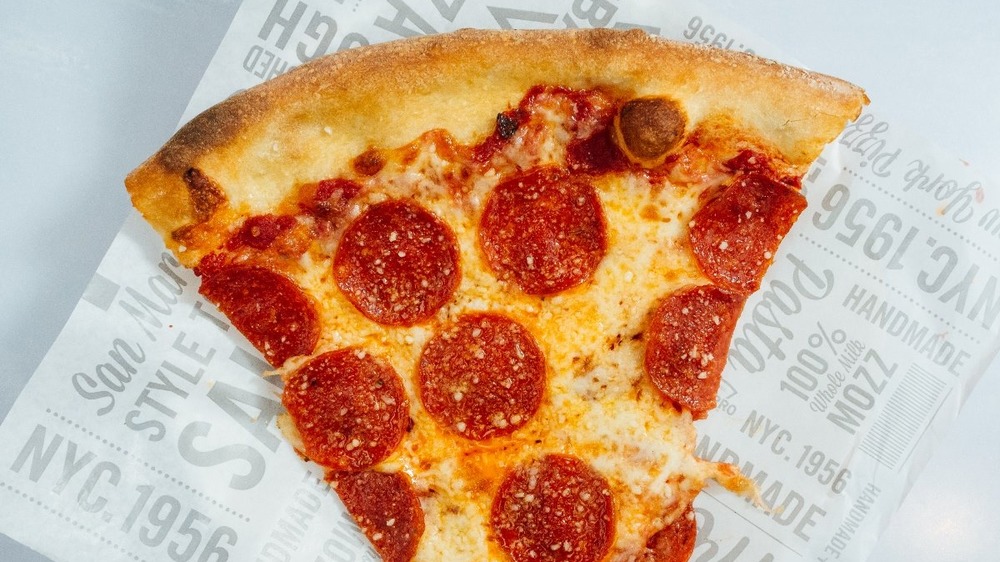Chain Restaurants That Changed Their Signature Recipes
America's dining landscape can arguably be defined by the chain restaurant. Whether fast food, fast-casual, or a more traditional sit-down dining experience, chain restaurants can be found all over the United States, and outside our borders as well (hello, capitalism). There's a sense of comfort in a chain restaurant. You go in knowing exactly what to expect, and a quick scan of the menu can invoke memories of family dinners, special gatherings, and weekend outings. Depending on which state you're in, you'll get a different ranking of the best chain restaurants, but across the board, they are deeply personal to many Americans and play a defining role in our food culture.
But as with all aspects of culture, things change over time. Most chains that are still here today have seen their share of ups and downs, and ultimately had to adapt to changing consumer preferences. For some, that has meant changing up or even entirely reinventing their signature recipes, whether to meet new needs for its customers or simply grab their attention once again. Some of these changes have been welcomed, others are bemoaned by fans. Keep scrolling for some of the most notorious times chain restaurants changed their signature recipes.
Domino's pizza
When you think of major recipe makeovers, Domino's is likely one of the first restaurants that comes to mind. The chain, which has been around since 1960, was the fastest-growing pizza restaurant in the country at one point. That is until the competition grew stiff, and pizza lovers nationwide realized that they didn't have to sacrifice taste for speed... and that Domino's pizza just wasn't very good compared to the rest.
So, what did Domino's do about it? They took the criticism and ran with it, launching the "Pizza Turnaround" in 2008. The campaign encouraged customers from all over to tell the world what they really thought of the old pizza. And they did not hold back. Some said the crust tasted like cardboard, and the sauce was more like ketchup. Others called it "the worst excuse for pizza" they've ever had.
By the end of 2009, Domino's rolled out a completely new and improved pizza recipe. According to Pizza Marketplace, Domino's new recipe features that signature garlic and herb-seasoned crust we've grown to love, plus a better, bolder tomato sauce, and 100 percent real cheese. Whether it was the recipe or the strategy, Domino's did something right, and today it's once again ranked among the best pizza chains out there (via Daily Meal).
McDonald's french fries
Forget the Big Mac. Chicken nuggets can step aside. When it comes to McDonald's, their signature french fries are king. They are easily voted the best fast food fries you can get, even as fans have noticed they don't taste quite the same as they used to. These beloved, golden treats have undergone several changes over the years, namely in how they are fried up to crispy perfection. And the changes haven't come without some controversy.
Up until the 90s, McDonald's was frying its french fries in beef fat, called tallow. Then, in order to cater to an increasing number of health-conscious customers, the chain switched to a vegetable oil blend (via Business Insider). Nevermind the fact that the switch wasn't actually any healthier. What McDonald's didn't tell folks when it made the change is that it continued to flavor that oil with beef essence, to maintain its signature french fry flavor. When this secret came out, McDonald's faced lawsuits and a ton of criticism from vegetarians and Hindu customers, who do not consume beef for cultural and religious reasons (via CBS News).
Since then, McDonald's french fries have been made using completely vegetarian oil. And in 2002, the chain switched to a soy-corn oil blend with less trans fat and cholesterol. (via SF Gate).
McDonald's Big Mac Special Sauce
While french fries may reign as the most popular food at McDonald's, they definitely share the spotlight when it comes to the most iconic menu items under the Golden Arches. The Big Mac is basically synonymous with McDonald's. It was created at a franchise in Pittsburgh in 1967, and now it's reportedly the chain's second best-selling item of all time. So, what made this double patty, triple bun creation such a smash hit? Some say it all comes down to that creamy, tangy Special Sauce. But like the fries, this signature recipe has also seen some changes over the years.
When the Big Mac launched nationwide in 1968, there were actually two versions of the Special Sauce being used. According to the company's website, after a few years of testing and development, one signature Big Mac special sauce came to life. Then in 1991, the recipe was changed "to cut costs," but by 2004, McDonald's exec Fred Turner (who worked alongside the company's founder, Ray Kroc), was brought out of retirement to help the struggling chain get back on track (via Chicago Tribune). One of the first orders of business was to track down the original recipe for the Big Mac Special Sauce and return the iconic burger to its former glory.
The latest change to the Special Sauce came in 2018, when McDonald's made some big changes across the board, removing artificial flavors and preservatives from most of its menu items, including the Big Mac sauce.
And also McDonald's apple pies
Many McDonald's lovers will tell you one of the best things on the menu comes at the end of the meal. The chain's iconic handheld apple pies are a tried and true fan favorite. They're as classic as it gets. The pies have been on the menu since 1968 (via Eater) and have been unchanged since 1992, when McDonald's switched from frying the pies to baking them, much to the consternation of many fans (and some people have still not gotten over it). So, when McDonald's changed the signature pie recipe in 2018, many customers were outraged, to say the least.
According to McDonald's, the recipe update was "in line with other positive changes" the company was making at the time, removing artificial ingredients to many of its menu offerings. As for the apple pies, McDonald's says the new recipe "is made with fewer ingredients such as sugar, sliced 100-percent American grown apples and a bit of cinnamon to the filling for flavor to give each one that homemade taste our customers love."
Except that customers weren't loving it. Many took to social media slamming McDonald's for fixing something that wasn't broken in the first place. One Twitter user called for "rioting" in the street.
Panera Bread's Broccoli Cheddar Soup
If a salad and soup combo is your go-to lunch order, chances are Panera Bread is in your midday meal rotation. The bakery-cafe has grown into a fast-casual favorite around the country (per Eater), reportedly serving up around 200 million servings of soup every year. And Panera Bread's broccoli cheddar soup ranks above all the others. The creamy, cheesy soup is a long-standing favorite, made better only when served in a signature warm and fluffy bread bowl.
Panera's broccoli cheddar soup got a makeover in 2016. Per Business Insider, the change was part of the chain's goal to remove all artificial flavors, colors, preservatives, and sweeteners from its menu by the end of that year, starting with its soups. It took a lot of time and effort to recreate the signature recipes with only clean ingredients. Panera Bread's head chef told Food Business News that the broccoli cheddar recipe was revised 60 times until it was just right. Fans are still loving the soup, and now they can enjoy it guilt-free.
Burger King's Whopper
When it comes to Burger King, there's nothing more signature than the Whopper. It just might be the most iconic fast food dish out there. The hearty, flame-broiled burger was created in 1957, just a few years after the first Burger King opened, and didn't face any real competition for nearly a decade until McDonald's Big Mac was introduced in 1968. The OG of fast-food burgers, the Whopper remained unchanged for more than 60 years before Burger King decided it was time for an upgrade. In early 2020, Burger King announced its signature Whopper would join the growing list of fast foods made without artificial additives.
While Burger King wasn't the first chain to make this change, it arguably made the biggest splash. Burger King decided to promote its new Whopper with a decidedly gross commercial showing a preservative-free burger naturally decomposing over the course of a month and growing a whole lot of nasty mold in the process. While many fans argued the ad wasn't necessary, to say the least (per Marketing Dive), it certainly got people's attention (via CNBC).
Wendy's hamburgers
Wendy's has been serving up old-fashioned hamburgers since 1969. Despite humble beginnings, it's grown into the third-largest fast-food burger chain in the U.S., with nearly 6,000 locations across the country. Fans have been loving Wendy's iconic square-cut burger patties, alongside a side of fries (made for dipping into those signature Frostys, of course) for more than four decades.
Then, in 2011, Wendy's decided it was time for a change, and completely reinvented their 42-year-old signature burger recipe. Not because it was bad, but because, according to Wendy's, "we wanted it to be better," adding, "isn't that what long-term brands do? They reinvent themselves" (via NBC News). The move was definitely strategic, though. In a world of burgers dominated by the likes of McDonald's, Burger King, and Five Guys, Wendy's was looking to draw attention to itself, and hopefully, boost struggling sales at the time (via The New York Times).
The new sandwiches were branded Dave's Hot 'N Juicy burgers, after Wendy's founder Dave Thomas. They feature thicker beef patties, buttered and toasted buns, properly melted cheese, and new toppings, including red onions, crinkle cut pickles, and mayo instead of mustard (via Serious Eats).
Buffalo Wild Wings' boneless wings
If you consider yourself a lover of buffalo wings, you may want to thank Buffalo Wild Wings. The chain, which opened its doors in Ohio in 1982, helped make this small-town secret a nationally beloved snack, on game day or otherwise. Then, in 2003, Buffalo Wild Wings really changed the game when it introduced boneless wings. They quickly became one of the most popular items on the menu, with "nearly 100 million served up every year."
The fan-favorite recipe remained unchanged for 16 years, until 2019 when the company decided it was time for an upgrade. At the time, the company was struggling. Sales were stunted in the face of rising chicken prices and growing competition, and the chain was looking to sell off dozens of its franchises (via Nation's Restaurant News). Instead, Buffalo Wild Wings got a new CEO under a brand new holding company, Inspire Brands, who immediately put in place a plan to turn things around for the sports bar (via Business Insider). Part of that plan included a revamped menu, featuring a new and improved boneless wings formula.
According to FSR, the new recipe is "bigger, juicier, and tastier." It starts with chicken "marinated in a blend of spices then coated in a savory new breading. With over 30 percent less breading than before, the larger piece of marinated white chicken packs more flavor into every bite."
Starbucks' Pumpkin Spice Latte
Whether you're team PSL all the way or completely over the fad that seemingly takes hold every Autumn, it's undeniable that pumpkin spice lattes are a staple fall drink. Ever since Starbucks first introduced them to the world in 2003, they've exploded in popularity, becoming a go-to for basic girls and beyond. You'll find twists on the original in coffee shops around the world, not to mention copycat recipes all over the internet.
However, you may not know that the Starbucks Pumpkin Spice Latte that started it all didn't originally have any pumpkin in it. It was flavored with pumpkin pie spices and included a bit of artificial coloring instead. However, Starbucks was eventually called out by a food blogger for the lack of pumpkin in the drink, and customers followed suit (via USA Today).
In 2015, Starbucks changed the signature PSL recipe, removing the artificial coloring, and adding in real pumpkin purée. There were mixed reviews over the new recipe (via Spoon University). But, that may be less about what's in the drink and more about the cultural phenomenon it's become, for better or worse.
And all of Starbucks' default coffee drinks
At the time of this writing, Starbucks offers a plethora of milk options to meet all kinds of coffee preferences, from oat milk to coconut milk and everything in between. If all the options are too overwhelming for you to choose from in a pre-caffeinated state, that's fine, too. Starbucks will make your drink with its default recipe. These days, that means using 2 percent milk in all espresso-based drinks. But what were they like before?
Up until 2007, Starbucks' go-to dairy standard was full-fat whole milk unless customers requested otherwise. Starbucks says the choice was driven by "increased consumer requests for reduced fat milk" which has fewer calories and fat than whole milk. To be more specific, "a 16-ounce latte now has 30 fewer calories and 36 percent less fat than it did in the whole-milk days" (via The Seattle Times).
Not only did this change meet changing consumer tastes, but it was reportedly easier for the baristas as well. According to the Seattle Times, prior to this milk swap, employees would have to create a makeshift blend of whole milk and skim milk when customers requested a reduced-fat latte.
Subway's bread
When it comes to fast food, sometimes it's best not to wonder too much about the ingredients in your meal, which is made to be tasty, filling, and last for a while without spoiling. But thanks to changing consumer tastes and some savvy food bloggers, many food and restaurant brands have moved to alter their recipes and get rid of artificial ingredients and questionable additives. Such is the case for Subway, which changed up its bread recipe in 2014 after a blogger shed light on the way the chain makes its bread (via CBS News).
Up until that point, Subway had been using a chemical known as azodicarbonamide in its bread. The chemical is approved by the FDA for use as "a bleaching agent and dough conditioner" in cereal and bread. But as it turns out, it's also used to make yoga mats. Once this came to light, consumers were understandably turned off, despite the fact that the ingredient is safe to use in certain food products. However, the negative publicity wasn't worth it.
In response to the backlash, Subway announced that it was developing "an improved bread formula" after "extensive performance and consumer testing" (via CNN). Now, whether or not this can actually be considered bread or not, is a whole other story.
KFC's 'Finger Lickin' Good' Sauce
It seems hardly up for debate that KFC chicken, with its secret blend of 11 herbs and spices, is quite delicious... or more accurately, it's "Finger Lickin' Good." But in the year 2020, amid a global coronavirus pandemic, it's probably best not to lick your fingers, no matter how good that over-80-year-old original recipe chicken may be. So, KFC decided it was probably best to table the decades-old slogan, at least for a little while, making a formal announcement in August 2020.
But there was another problem. What to do about KFC's signature "Finger Lickin' Good" sauce. With a name like that, the creamy sauce might just be too tempting. So by October 2020, KFC announced that its signature dipping sauce would now be known as "KFC Sauce." But the chain didn't stop there. It changed the entire recipe. The new "KFC Sauce" is said to be "tangy and sweet, with a bit of smokiness." The company says it tested 50 different versions of the new recipe before it found the perfect blend.
At least one review gave the new sauce high marks and described its taste as reminiscent of Carolina barbecue sauce — and perhaps even another famous chicken chain's signature sauce.
Sbarro's pizza
For many millennials, weekend trips to the mall growing up weren't complete without a stop at the food court, where one could almost always find the buffet of hot, fresh Sbarro pizza. The restaurant was founded by a Brooklyn-based Italian couple in 1956 and has since taken over mall food courts. But the death of shopping malls, coupled with the rise of fast-casual dining led Sbarro into a downward spiral in the early 2000s (via QSR). In an effort to revive its former glory, the company embarked on a total rebranding that included completely changing its signature pizza recipe.
In 2012, Sbarro introduced a brand new Neapolitan-style pizza that would replace its longstanding formula. The company said it was "returning to its Italian roots" (via Cision PR Newswire) with the new pizza, which features "all-natural ingredients, including dough made from scratch daily, vine ripened whole peeled tomatoes and freshly shredded whole milk mozzarella."
Sbarro executive Anthony J. Missano told The New York Times that the company recognized that "people are much smarter about what they're eating," adding, "they have higher expectations of what they're going to get when they go to a restaurant, and we're going to give it to them with this new pizza." Whether it's the new pizza (which does get good reviews), or a resurgence of nostalgia, Sbarro has returned to the ranks of America's favorite pizza chains (via The Daily Meal).
